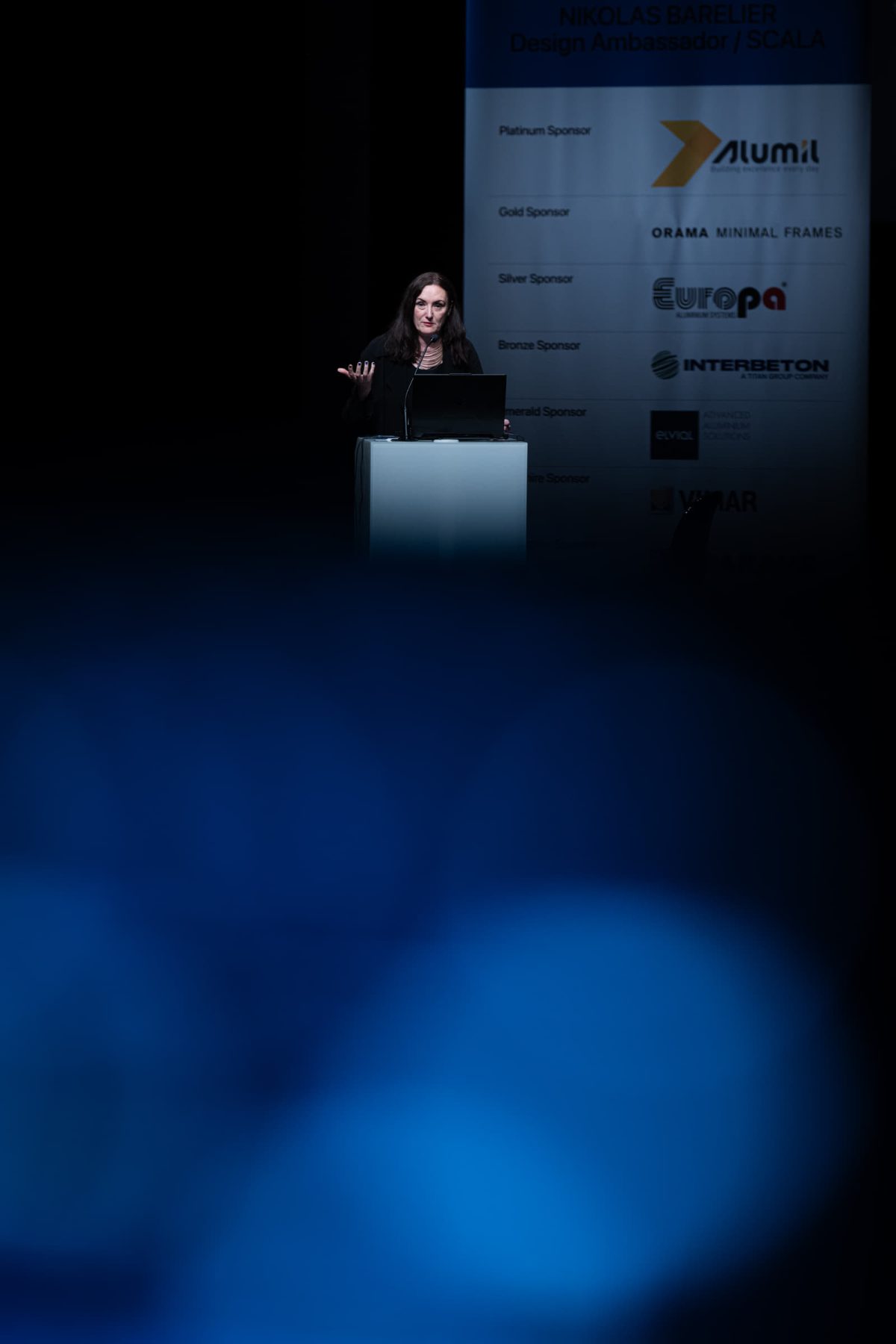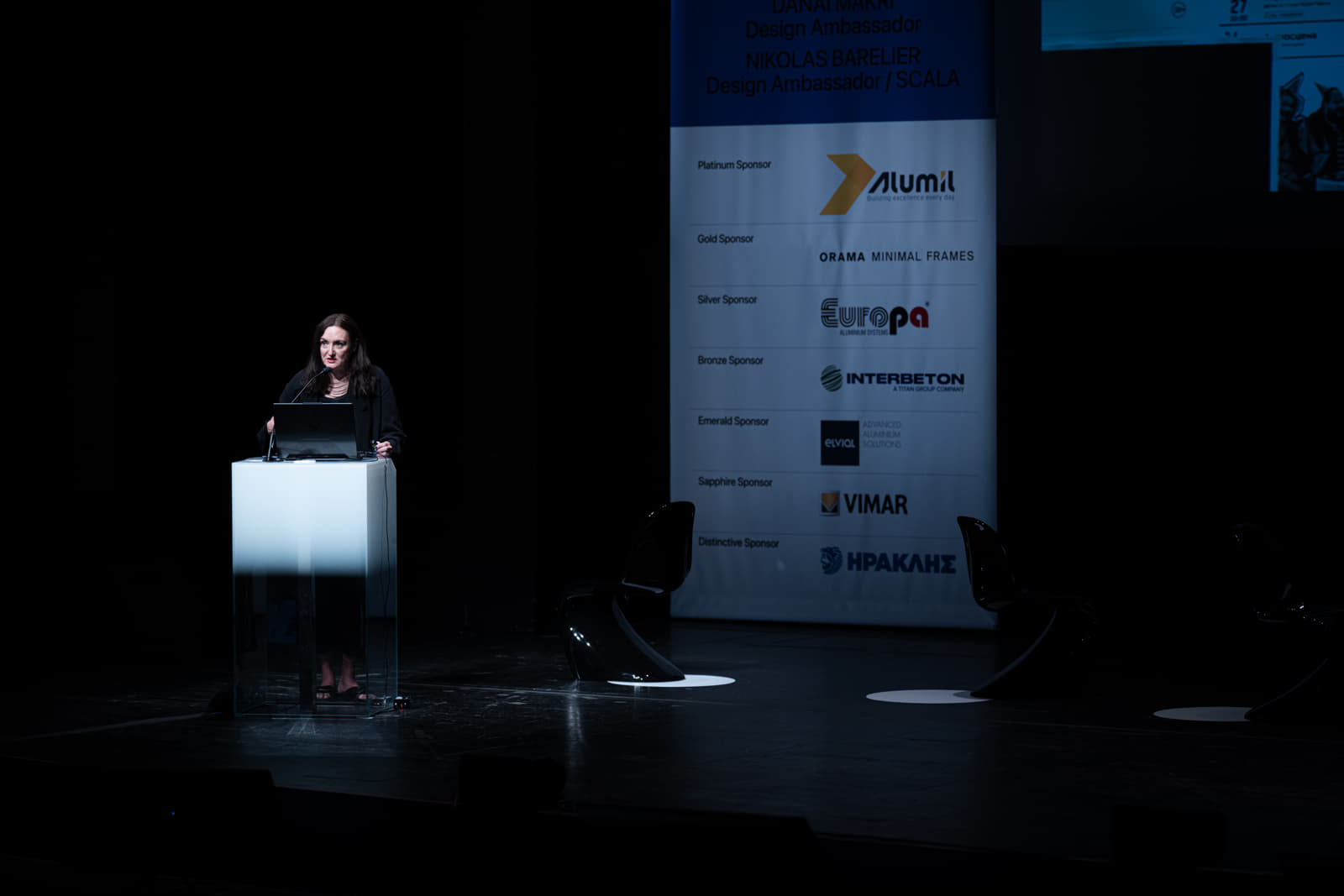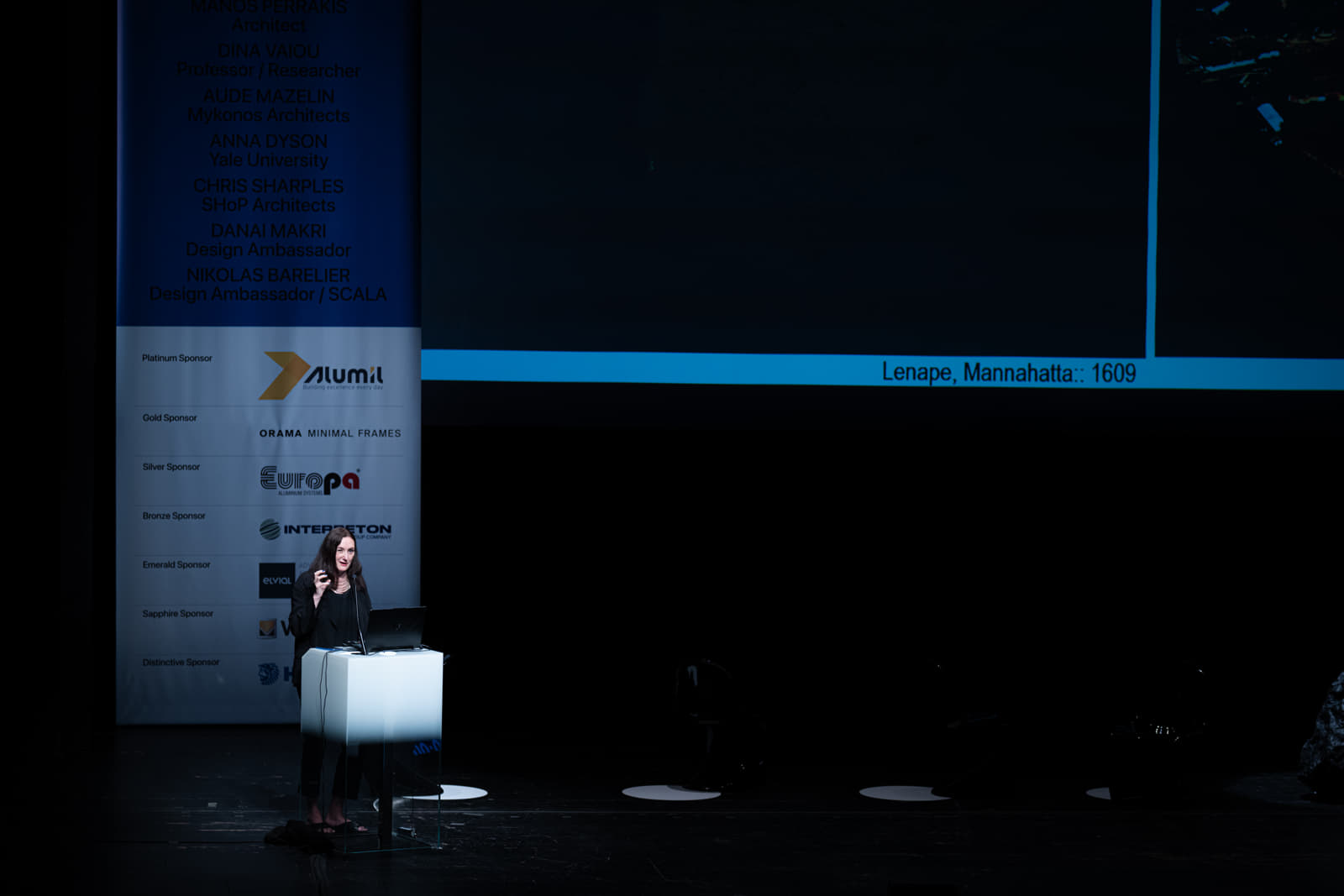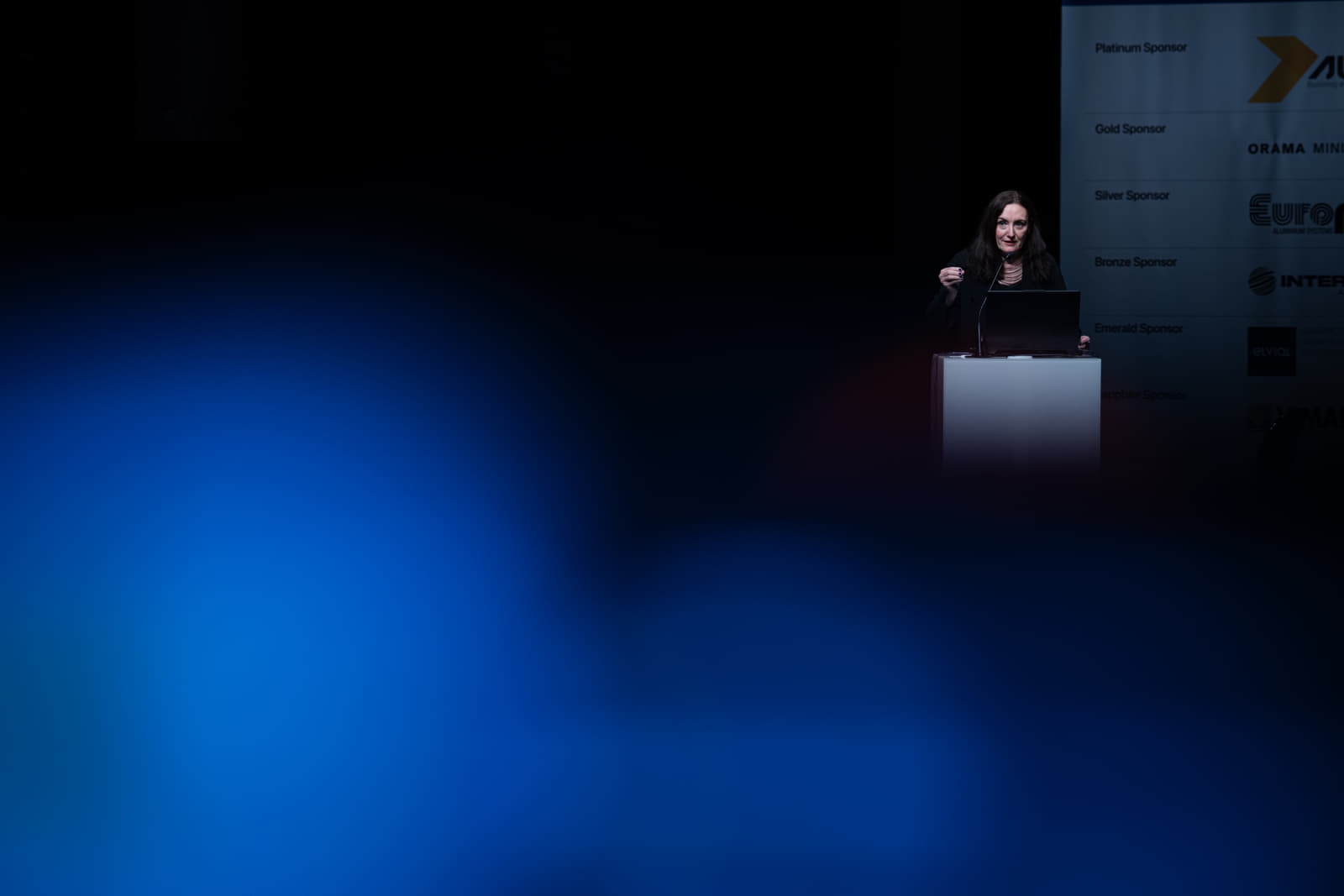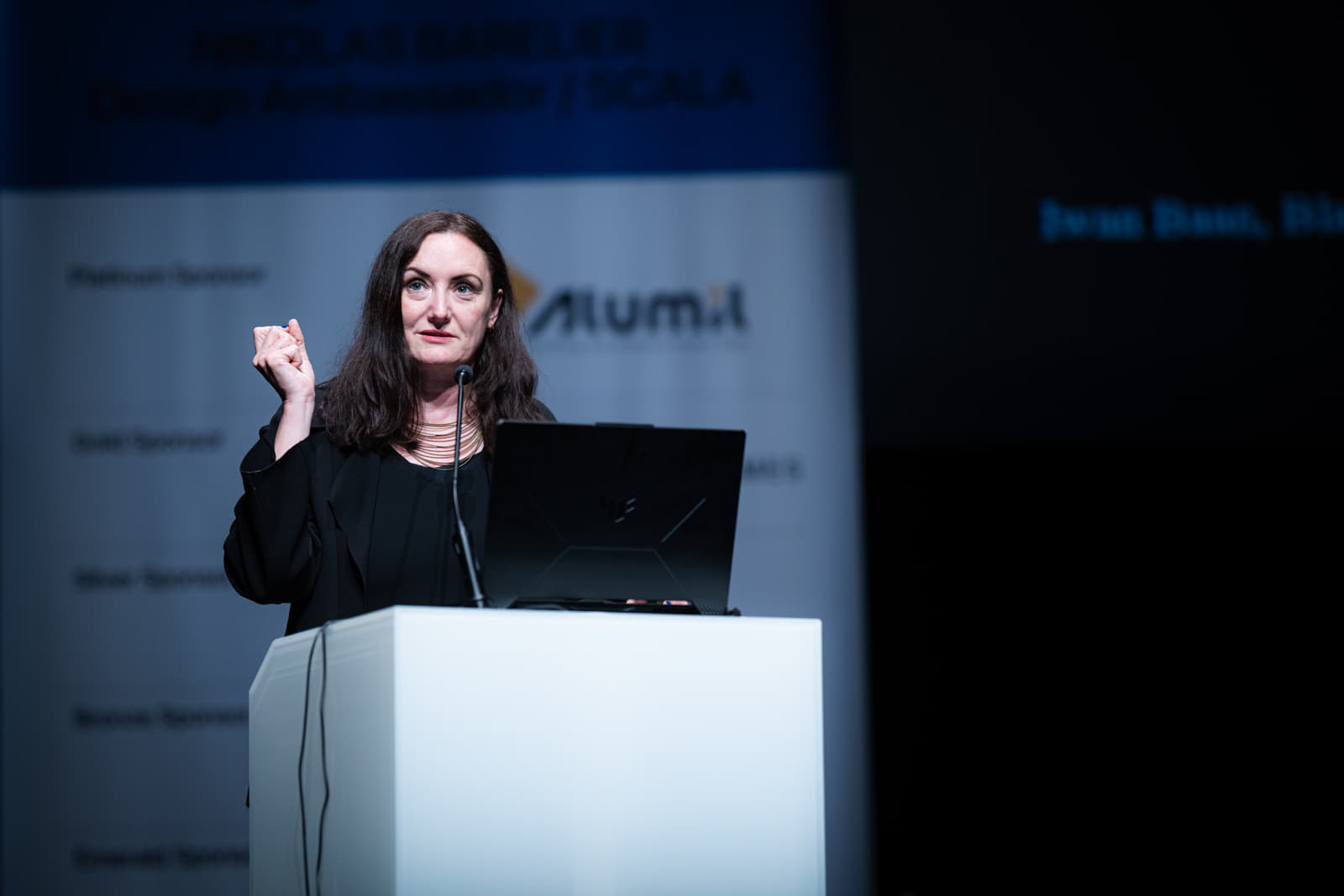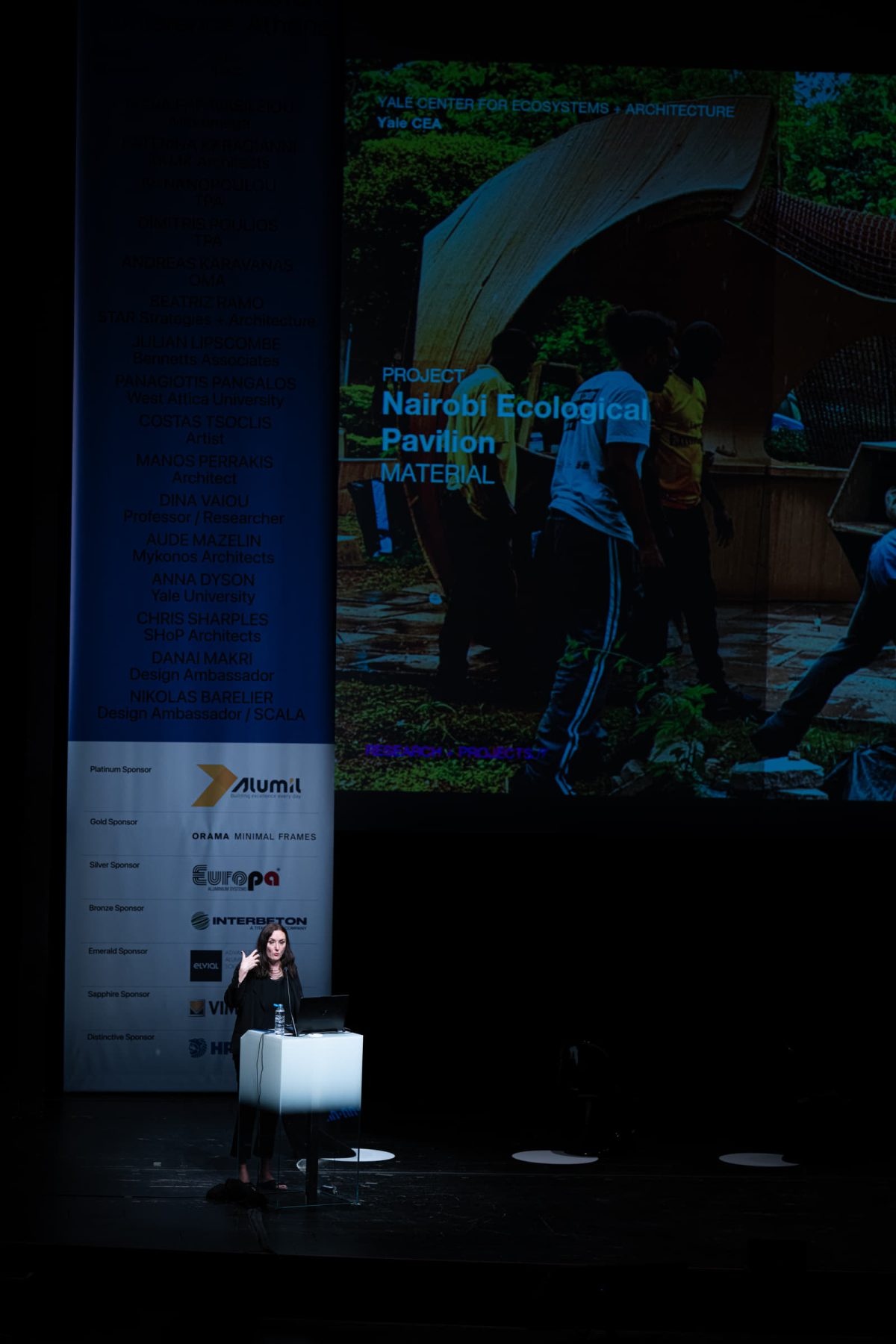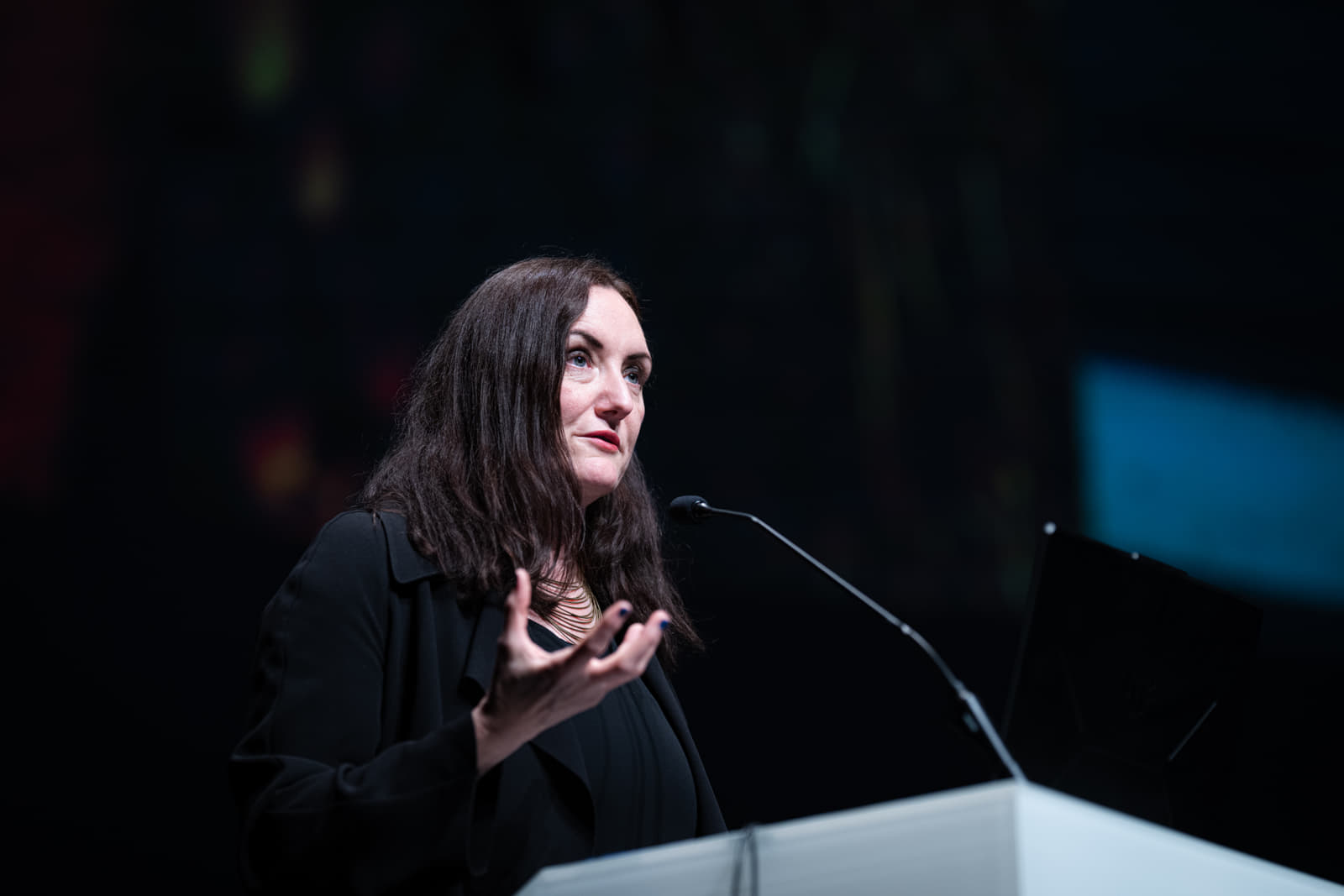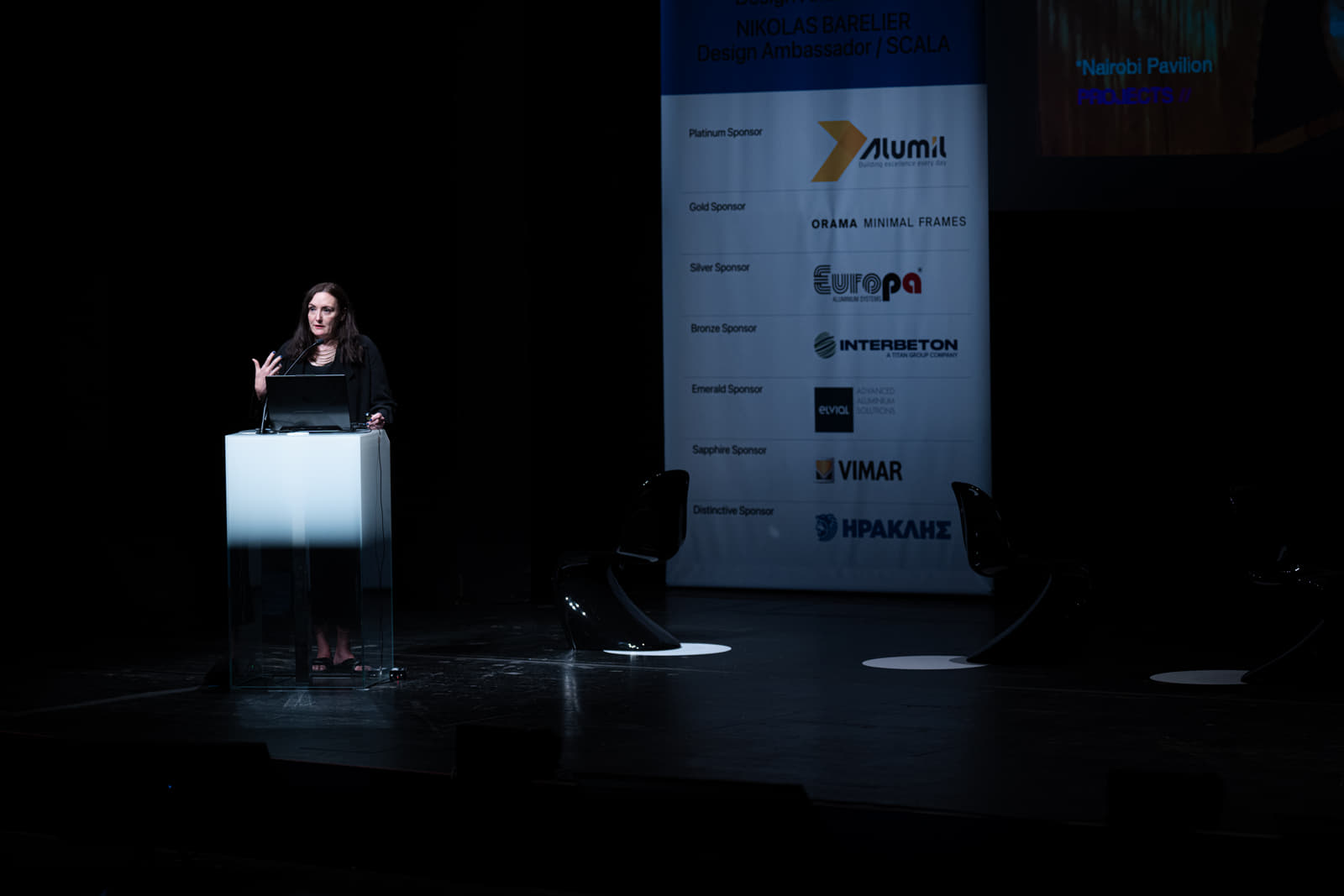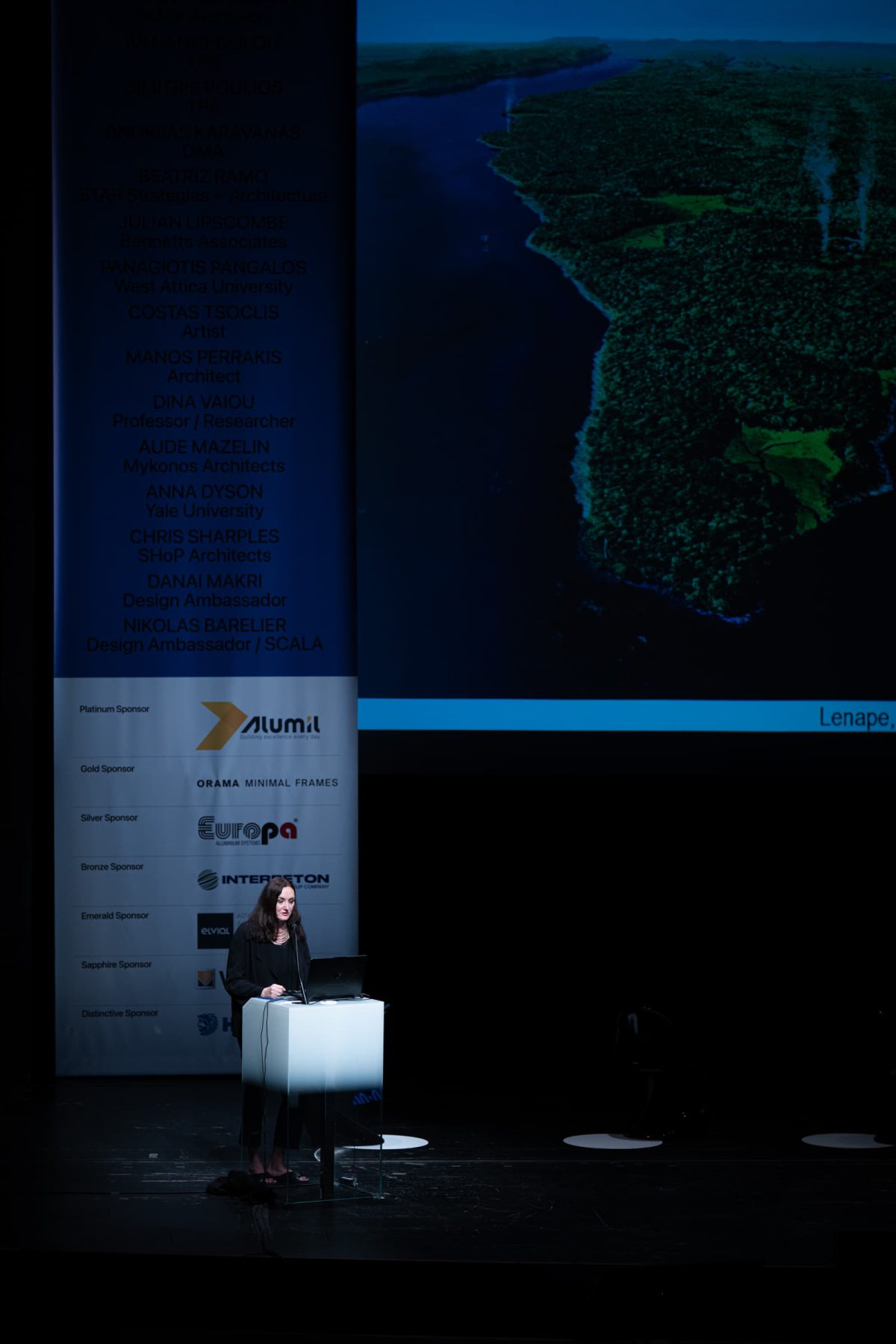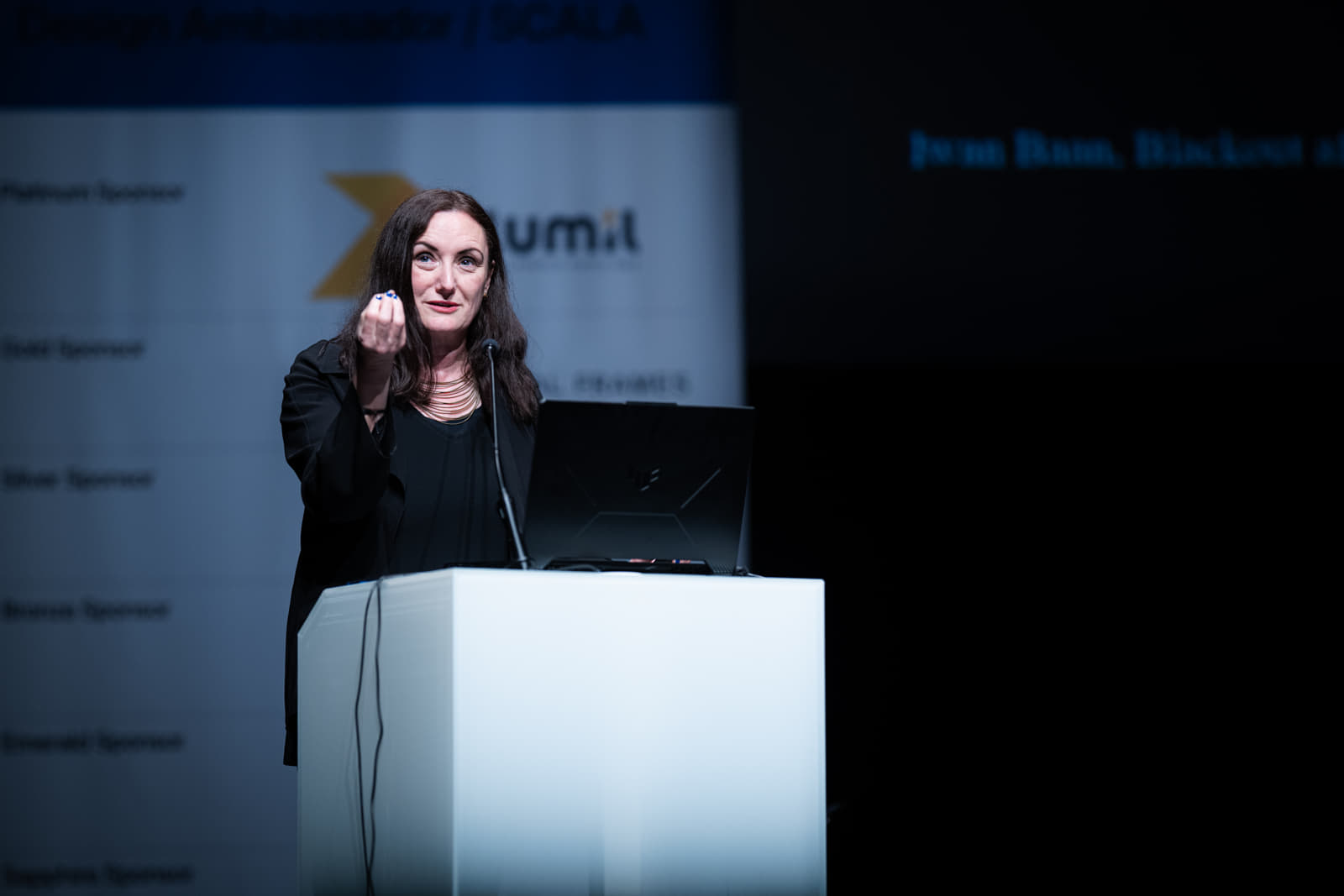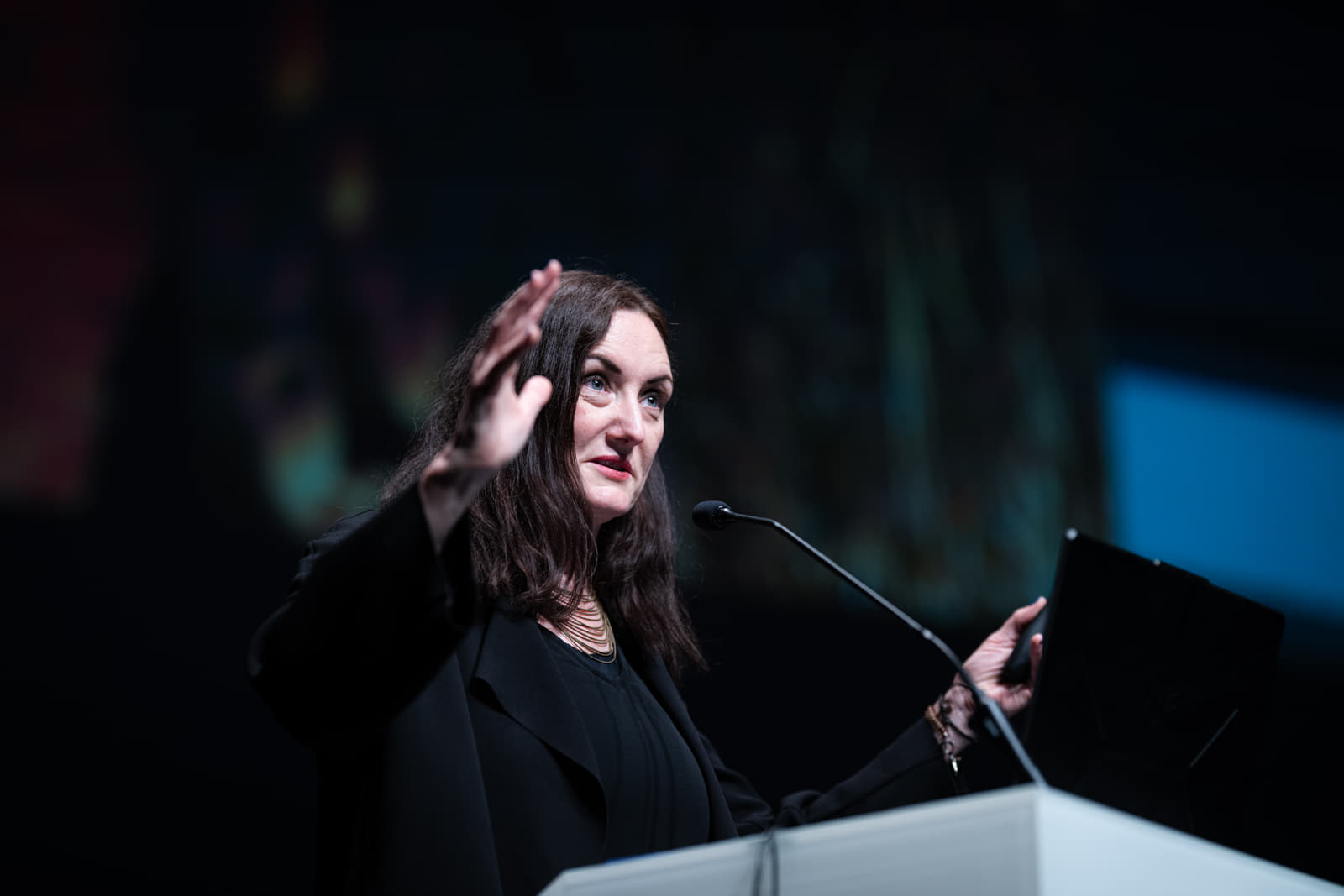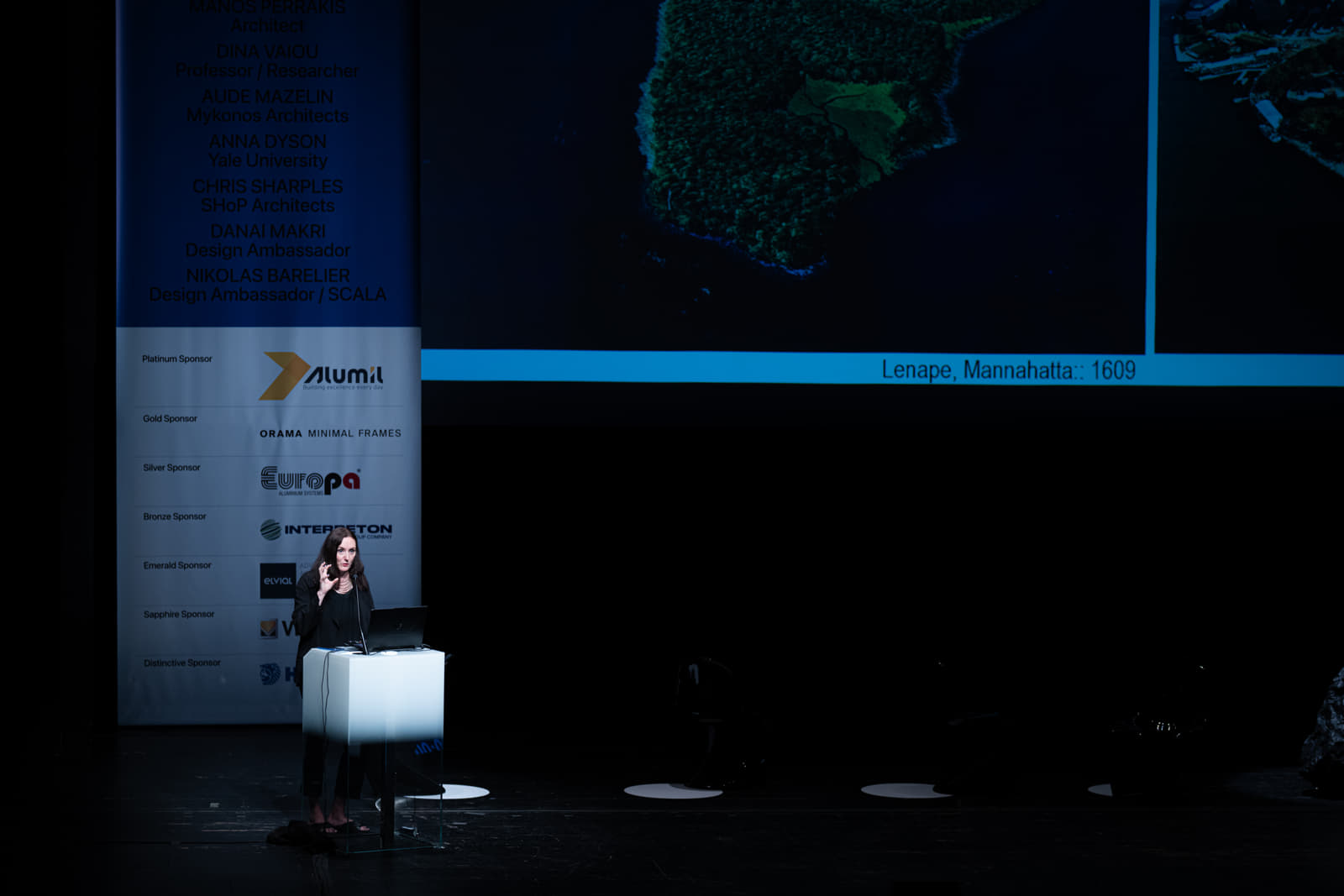In her speech entitled “Designing with Biodiversity, Embracing the Complexity of Natural Systems’, in the context of this year’s event ESO “EMBRACING CHAOS IN A SMART WORLD”, Anna Dyson, architect and founding director of the Yale Center for Ecosystems + Architecture (Yale CEA), presented the center’s vision and philosophy for creating biodiverse environments, and reimagining how we might design and live in harmony with them.
Read more about ESO 2025, “Embracing Chaos in a smart world” here!
Anna Dyson, founding director of the Yale Center for Ecosystems + Architecture (Yale CEA), starts her ESO talk by analyzing the vision and posing the questions the center aims to address:
“We are developing new systems to invent new relationships. How do we set up associations between humans, plants, animals, and the environment?”
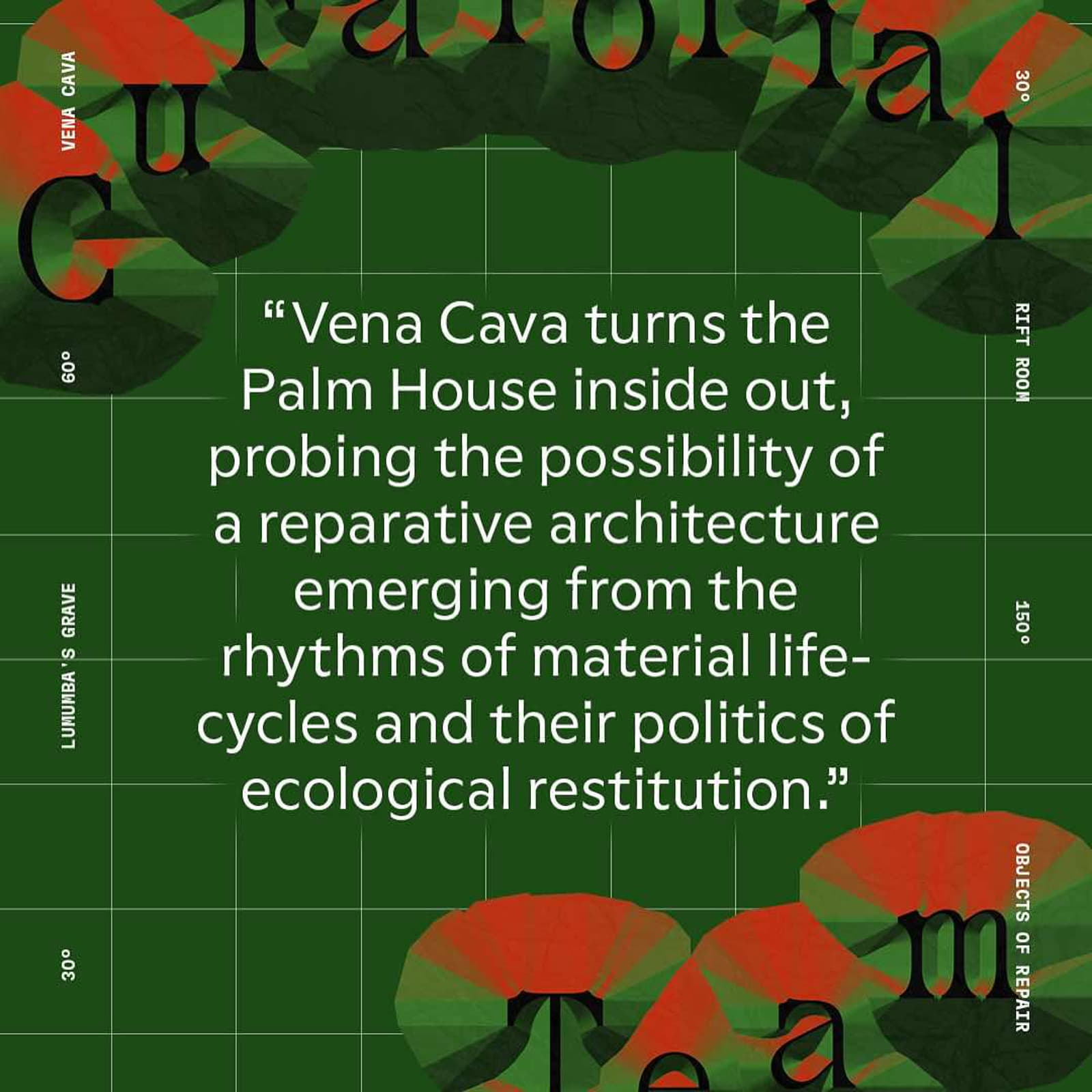
While recognizing ourselves as parts of extended ecosystems and by studying how natural systems function, the Yale CEA team reflects on how we can come closer to nature-based processes.
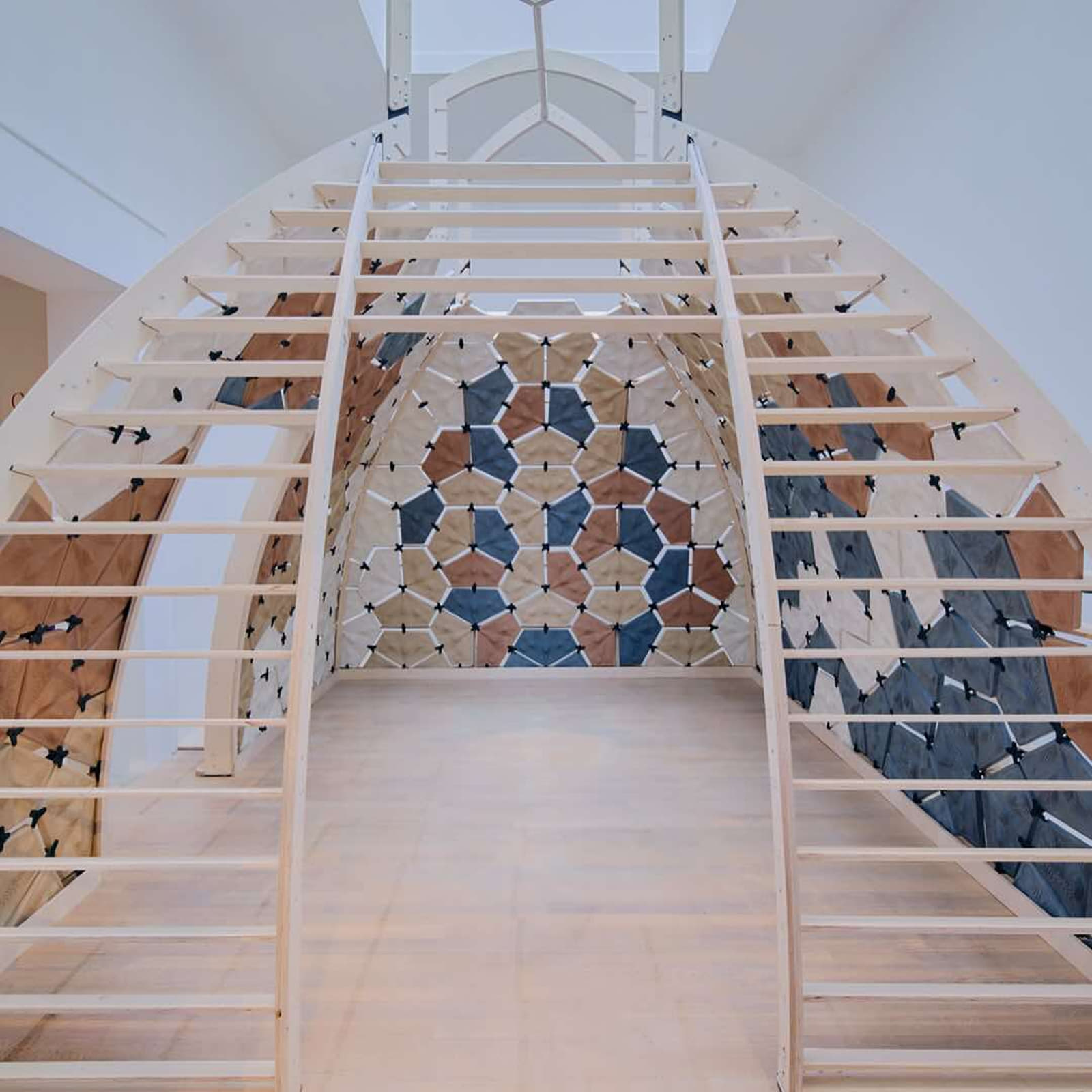
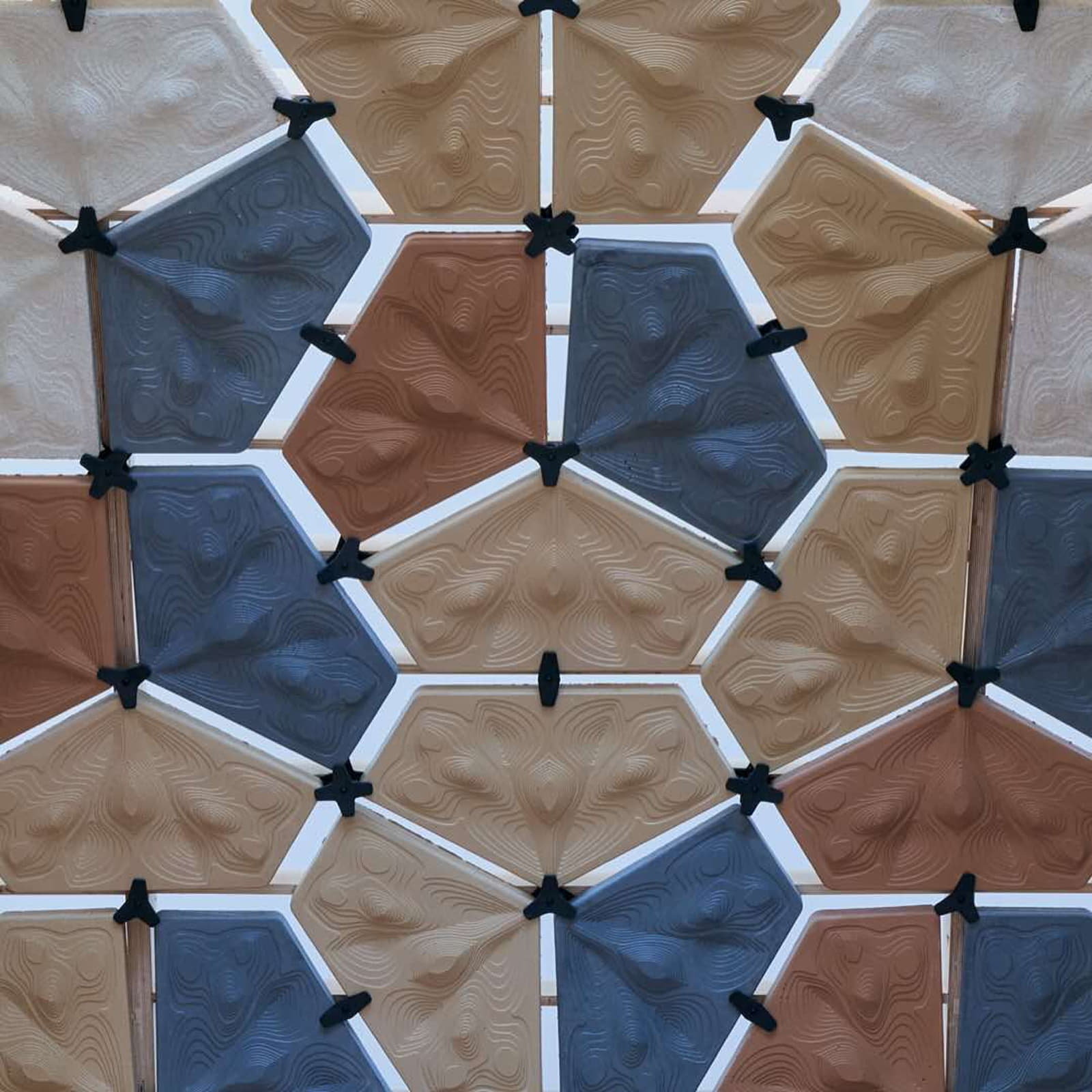
“What is regenerative design?”
In thinking about this question in relation to the theme of the conference, the speaker considers the concept of chaos and the varying definitions associated with it. Negative connotations often arise when chaos is linked to disorder or unpredictability.
Yet, “another definition of chaos, emerging from chaos theory, is the idea that certain systems—complex, interdependent systems—are highly sensitive to initial conditions. That is, a small change can lead to a huge change in behavior and conditions within a system.”
“For us, regenerative design comes from the smallest of acts that are sensitive to the context.”
“We are looking for new ways to think about biocompatibility.”
“Systems are biocompatible when they foster life and biodiversity.” In an effort to scale up their projects and accelerate deployment, Yale CEA partners with the architecture, engineering, and construction industries.
“What does designing for biodiversity mean?”
“First, we have to ask how we live.” Even in the city of Athens, an example of how indoor and outdoor living can be blended, it is evident that people spend most of their time indoors. According to statistics, “we spend more than 90% of our time indoors.”
The divide between humans and nature forms one of the foundations of Western civilization, where “we are not coexisting with natural systems.” In contrast to this lifestyle, Dyson references the way of living of the Lenape indigenous people.
Despite the multiple differences between us, “We share one thing with the Lenape indigenous people: we burn things to make things.”
“We have to radically question not just how we build something new in the future, but how we radically transform and retrofit the environments we already have.”
“We have separated non-human living systems from our buildings and compromised our immunity and well-being in the process.”
The systems we have created—and the ones we are exposed to—are filled with problematic interdependencies and have little resiliency.
“How do we actually bring biodiversity back to our environments for greater resiliency?”
We have to allow these chaotic systems and design with them.
“How are we building, and with what materials?”
Until 1945, humans used biogenic and low-carbon materials to build. Today, we urgently need a transition. Circular material economies offer an alternative, but we must also address the growing demand from ongoing construction projects. Yale CEA was commissioned by the UN to author a report examining all construction phases and proposing a philosophy of transition.
The report followed three main axes:
- Avoid Waste, Build with Less
- Improve Conventional Materials (Concrete & Aluminum)
- Shift to Biobased Materials — Regenerative silviculture, permaculture methods in agriculture and forestry, and radical new alliances between sectors
“How do we understand our relationship to plants and animals?”
Recognizing that it is very complex to design with living systems, Yale CEA collaborates with interdisciplinary teams to explore how we might potentially interface with and adopt plant-based processes to clean our air and water.
Dyson continued her speech by focusing on several Yale CEA projects:
NYC Farm Carts: Modular Plant Growing Systems for Urban Farms and Improved Air Quality looks at new ways of food production and footprint minimization. Ecological Living Module (ELM NYC) investigates how far one can go with just 20 sqm for a family of four to produce all their food, energy, water, and air purification needs.
“We do not advocate, obviously, 20 sq. meters for a family of four, but that happens to be the size, unfortunately, allocated by the UN High Commission for Refugees—and the time people spend in refugee camps averages 18 years.”
Nairobi Ecological Pavilion is a structure printed with bamboo. “We do not imagine this process necessarily happening in a lab or factory. We are looking to bring the distributive factories to the site.”
“How can we imagine these kinds of robots on the site of a farm or forest? You can take from the forest floor, from farm waste. We can upcycle these materials.”
Examples of using coconuts, mushrooms, and silk cocoons as construction materials were presented, following the question: how can we bring biomass back into the built environment, and how can we grow our buildings?
The Botswana Innovation Hub (BIH), designed by SHoP Architects, is an example of a building that is evolutionary and adaptive to new materials and innovations. The architects did not displace any flora or fauna of the savannah, but instead designed for the intensification and growth of biodiversity.
Public Safety Answering Center II (PSAC II) provided an opportunity to study the mutual behavior of plants and humans.
“We can leverage these systems to learn a lot about our relationship to the globe and to natural environments.”
Closing her speech, Anna Dyson emphasized the need to embrace chaos through the inclusion of other systems.
Using as a reference a nighttime photo of the Earth, open to multiple interpretations, she urged the audience to search for new ways of seeing, to turn our world upside down and view it from a different perspective.
Read more about ESO 2025, “Embracing Chaos in a smart world” here!
Credits of organization
Event title ΕΣΩ 2025: “EMBRACING CHAOS IN A SMART WORLD”
Typology Conference, Conference on Architecture & Design
Location Alexandra Trianti Hall, Athens Concert Hall
Date Wednesday 7 May 2025
Sponsors
PLATINUM SPSONSOR ALUMIL
GOLD SPONSOR ORAMA MINIMAL FRAMES
SIVLER SPONSOR EUROPA
BRONZE SPONSOR INTERBETON
ΕΜERALD SPONSOR ELVIAL
SAPPHIRE SPONSOR VIMAR
DISTINCTIVE SPONSOR HERACLES
GRAND SPONSORS ISOMAT, NEOKEM, ΜΑRΜOURIS, SATO, GRUPPO CUCINE, SIFAKIS, ΚΥΠΡΙΩΤΗΣ, ΚΕΒΕ, RADOS, SOLOMON, AVE, CRYSTAL CONSTRUCTION, AHI CARRIER, VERTICAL, ARCHITEXTURE, NAFPLIOTIS, ETHIMO, URBI ET ORBI, MOLESKINE, STORMY SA
CREATIVE PARTNERS THE DESIGN AMBASSADOR, STAGE DESIGN OFFICE, EVIN, SCENTLINQ PRO
COMMUNICATION SPONSORS & COMMUNITY PARTNERS ARCHISEARCH, ARCHSTUDIES, ANDRO, FORTUNE GREECE, LIFO, OPEN HOUSE ATHENS, OZON MAGAZINE, THE GREEK FOUNDATION
HOSPITALITY SUPPORTER THE MODERNIST
COFFEE BREAK SPONSOR TAF
Content Creation & Communication Sponsor Archisearch.gr
Production Management & Artistic Direction Design Ambassador
READ ALSO: ΕΣΩ 2025: "EMBRACING CHAOS IN A SMART WORLD" // “More With Less - Embracing Chaos to Drive Change”: Julian Lipscombe - Bennetts Associates
